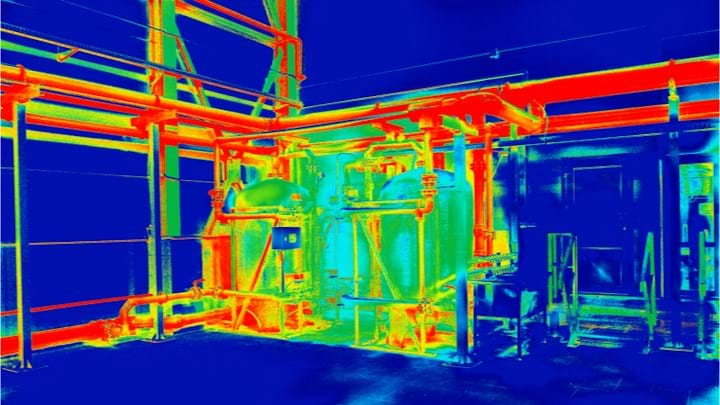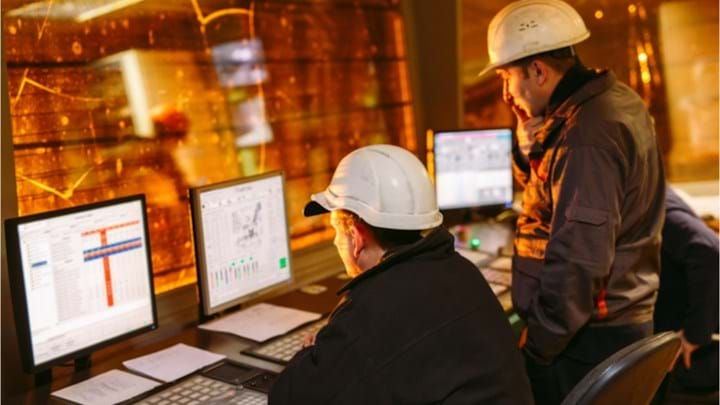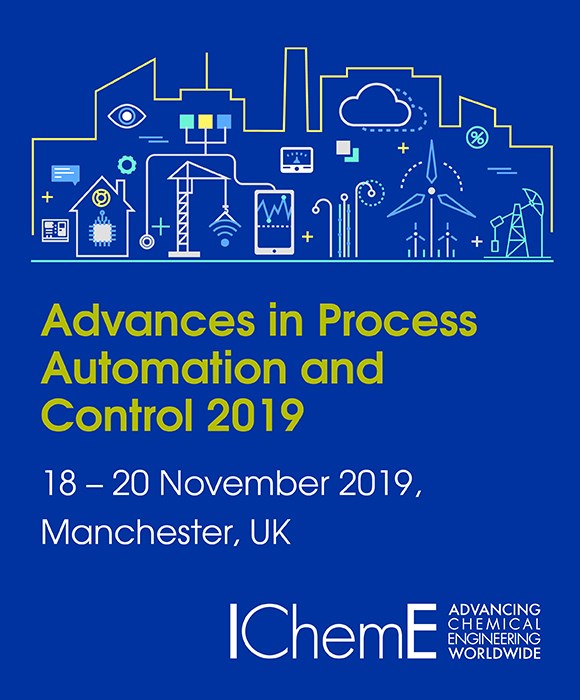The Grandest Challenges

THROUGHOUT history engineers have had a profound impact on society and the world. Since the ancient Greeks and Romans, engineering prowess has enabled and driven the economies that supported empires. The first and second industrial revolutions brought with them the formalisation of the profession of engineering. What it means to be an engineer became intertwined with the impact of the grand challenges that were being addressed at the time.
These ‘Grand Challenges’ have characterised, consciously or otherwise, what it means to be an engineer. Civil engineering emerged from the aspiration to apply technologies developed for military purposes for the benefit of wider, civilian society. Industrialisation drove the requirements for new specialisations in mechanical, and later electrical engineering. More recently the emergence of energy-intensive industries required a new generation of disciplines including our own chemical and process engineering. As we move through a fourth revolution based around data and communications, no doubt another set of disciplines will emerge.
As a profession we should take great pride in what we’ve accomplished: billions have been lifted out of poverty; education and good health has become the expected norm across most countries; economies are vibrant with innovation and creativity. But we also need to accept responsibility for the impact that progress has had: pollution jeopardises ecosystems around the planet; there is unprecedented depletion of non-renewable resources; and most prominent of all, changes to climate and global warming threaten the very existence of society. Perhaps for the first time in history we face a grand challenge of our own making!
Tackling climate change
The global community lacks no ambition, or urgency, when it comes to climate change. For over thirty years the Intergovernmental Panel for Climate Change (IPCC) has expounded the scientific case for climate change, limiting global temperature rise and reducing greenhouse gas emissions. The 2015 Paris Agreement was adopted by nearly every nation, committing to limiting global temperature increase to below 2°C, while pursuing means to limit it to 1.5°C. Yet on almost every effort – scale-up of renewables, reenergising nuclear, or deployment of carbon capture, utilisation and storage (CCUS) – we currently lag the required trajectories, while absolute global emissions continue to rise. Ambition and urgency are not enough; we also need pragmatic solutions.
In 2009, a Cambridge University team, concerned about the lack of real progress asked the simple question: what would make a big difference? They found that global carbon emissions were driven by three almost equal activities: energy use in buildings, in vehicles, and in industry. For buildings and vehicles efficiency improvements and technology switching were clear technical pathways for reducing emissions, but industry was already relatively efficient, possessed few viable production alternatives, and was facing significant future materials demand growth. As such industry has been labelled ‘difficult to decarbonise’.

The Cambridge team’s acclaimed book, Sustainable Materials: With Both Eyes Open (Allwood et al. 2012), outlines the decarbonisation challenges faced by industry and reviews all available options. The book presents two approaches. ‘With one eye open’ describes a range of technical options being pursued: energy efficiency, heat capture, novel process routes, CCUS and decarbonised electricity. The team modelled trajectories of these technologies to 2050, for five materials. If every technology was deployed, to its technical limit, in each industry, then emissions per tonne of material could be halved. However, demand for these materials is expected to double by 2050, resulting in zero absolute emissions savings. This is clearly a problem!
‘With both eyes open’ outlines an alternative range of mitigation options, collated under the banner of ‘material efficiency’: using less material by design, reducing yield losses, diverting manufacturing scrap, re-using metal components, longer life products and reducing final demand. These six options had been traditionally overlooked by industry yet with new business approaches and models, these could become profitable and mitigate emissions. Modelling these options was challenging, but the results showed that pursuing material efficiency across the five materials could halve emissions per tonne of material by 2050. Combining both the options together (one eye and both eyes open) could lead to a 75% reduction in emissions per tonne, equal to a halving of absolute emissions—some real progress!
Both approaches face significant challenges and much effort is still required to successfully deploy any option at scale.
A key question to emerge from this analysis is: what should industry be doing? Reducing yield losses in the metal industries is a good start: currently 25% of all steel, and 50% of all aluminium, never makes it into a product, but is re-melted within the plant, wasting energy and producing unwanted emissions. Another is closing the gap between the best and worst performing plants, which can be as large as 30% for some industries. To do so requires a new methodological approach that considers the interactions between energy and materials in process plants and provides a comparable metric of how efficiently plants transform resources (energy and materials) into products. Resource efficiency provides such an approach.
Resource efficiency
Improving industrial resource efficiency is one of the most cost-effective options to simultaneously avoid wasting scarce and toxic resources, reduce operating costs and CO2 emissions, and improve responsiveness to future climate regulations. In fact, understanding the current state of a facility’s resource use, the factors driving it and the opportunities available to minimise it, is a prerequisite for companies to remain competitive.
The good news is, there is overwhelming evidence that the improvement potential of circular and resource efficiency measures in process industries is vast. The current raft of metrics, however, are ineffective: they are criticised for failing to appropriately quantify the energy and environmental impacts of improvement interventions. Furthermore, these metrics typically provide insight at the country or global level but are difficult to apply to resource-intensive material production. For such industries, applying circularity strategies to reduce emissions in practice means reducing overall resource inputs and waste of (energy and materials) per tonne of product.
We know that measurement is the dogma of industrial production. Understanding a company’s reliability, safety, or its production quality necessitates tracking their relevant performance metrics. Resource efficiency is no different. The first step in becoming more resource efficient involves putting a number on it. CEOs from resource-intensive sectors are coming under increased pressure from shareholders to disclose how they are preparing for the low-carbon economy and to demonstrate their sustainable business strategies. This pressure then translates into demands for site managers to quantify their operational resource efficiency. However, managers are struggling to come up with a meaningful metric.
So, how can a company go about adequately measuring its integrated resource efficiency? Together with the University of Cambridge, Emerson has developed an engineering solution based on well-established thermodynamics. Though devised in the 1900s, this method (commonly known as exergy or availability) has experienced a renaissance in the past two decades.

The approach traces resource use across entire production systems and characterises resources as a combination of two components: a chemical portion, based on the resource’s composition and concentration; and a physical portion, which accounts for the resource’s temperature and pressure. Using thermodynamics to disaggregate chemical and physical resource components also enables us to measure the quality as well as the quantity of these resources. This is key because not all resources are equally valuable. We want to ensure that the efficiency improvement measures we identify focus on the resources that make the biggest difference to CO2 emissions.
Unlike conventional energy-intensity or material-efficiency metrics, this new indicator integrates energy and material flows into a single, dimensionless number. In doing so, it consolidates multiple KPIs that currently measure resource use from different standpoints. As a result, producers are empowered to make the right choices at the right time, while widening the breadth of efficiency options available and capturing unavoidable trade-offs.
Based on this, we can now measure resource efficiency as a ratio of useful resource outputs to resource inputs. Results from these methods are founded on accurate energy and material flow sensor data and are substantiated through rigorous data collection, cleaning and analysis processes.
Armed with a meaningful measure of resource efficiency, companies can now manage and track their resource efficiency from bottom-up – be it through real-time management systems, operational performance reviews or the development of sector-wide benchmarks. The integration of all three activities along the management ladder and across the value chain would be the ideal.
Engineering redefined
We’ve taken enormous strides in making the process industries that we work in safe. We now need to tackle the issue of climate change and carbon neutrality with the same determination. Within the career-memory of many of us, serious injuries and fatalities characterised the operation of the process industries. Extraordinary efforts have been and continue to be made to address this. The idea of zero injuries has shifted from being a wild aspiration to the expected norm with safety a central focus of every chemical engineer. We’ve surrounded ourselves with practices, procedures and regulations that institutionalise this thinking and secure on-going improvement, but at what cost to our profession?
In the last 30-40 years the defining characteristics of engineers have changed. As procedures have become automated and institutionalised, and safety practices standardised and formulaic, some argue that engineers have moved down the spectrum from rule breakers and rule makers to being predominantly rule followers. Efficiency and conformity have overtaken innovation and creativity as the most prized characteristics.
Ironically, as our willingness and ability as a profession to innovate is diminished we find ourselves facing perhaps the grandest challenge of all – how to protect our planet from the impacts of climate change without damaging the economic systems that have done so much to raise people out of poverty. There has never been a more urgent need for the qualities and capabilities that have defined engineering and engineers for centuries. We need to rediscover our heritage and learn how to reward risk taking and alternative thinking – without compromising safety. We need to foster a renewed sense of rule making and learn to tolerate and manage an appropriate amount of rule breaking – because if we don’t, and we fail to live up to our responsibilities for, and ability to, impact climate change there are no alternate groups with the knowledge and expertise necessary to take our place.
Central to this is the ongoing need to attract the right talent, develop and retain them within the profession.
We particularly must nurture and support those with the mindset to challenge behaviours and make the new rules essential to overcoming this latest grand challenge.
Public perception of our industry is wrong and misguided, and we need to make sure that we don’t perpetuate the myth. There is a groundswell of activity by engineers and industry to tackle this grandest of challenges – working together through organisations and alliances such as the Oil & Gas Climate Initiative (OGCI) and the Task Force on Climate-related Disclosures (TFCD) to ensure progress is as rapid and impactful as possible. IChemE has revised its own strategy to fit with the UN Sustainable Development Goals and Engineering Grand Challenges (go and have a look at them if you don’t know what they are).
We will continue these themes and begin to change the conversation at APAC 2019, where leading figures from the field of process automation and control will gather to look at themes as diverse as sustainability, emerging technologies and cyber security. For more information, visit: https://www.icheme.org/career/events/advances-in-process-automation-and-control/
Recent Editions
Catch up on the latest news, views and jobs from The Chemical Engineer. Below are the four latest issues. View a wider selection of the archive from within the Magazine section of this site.






